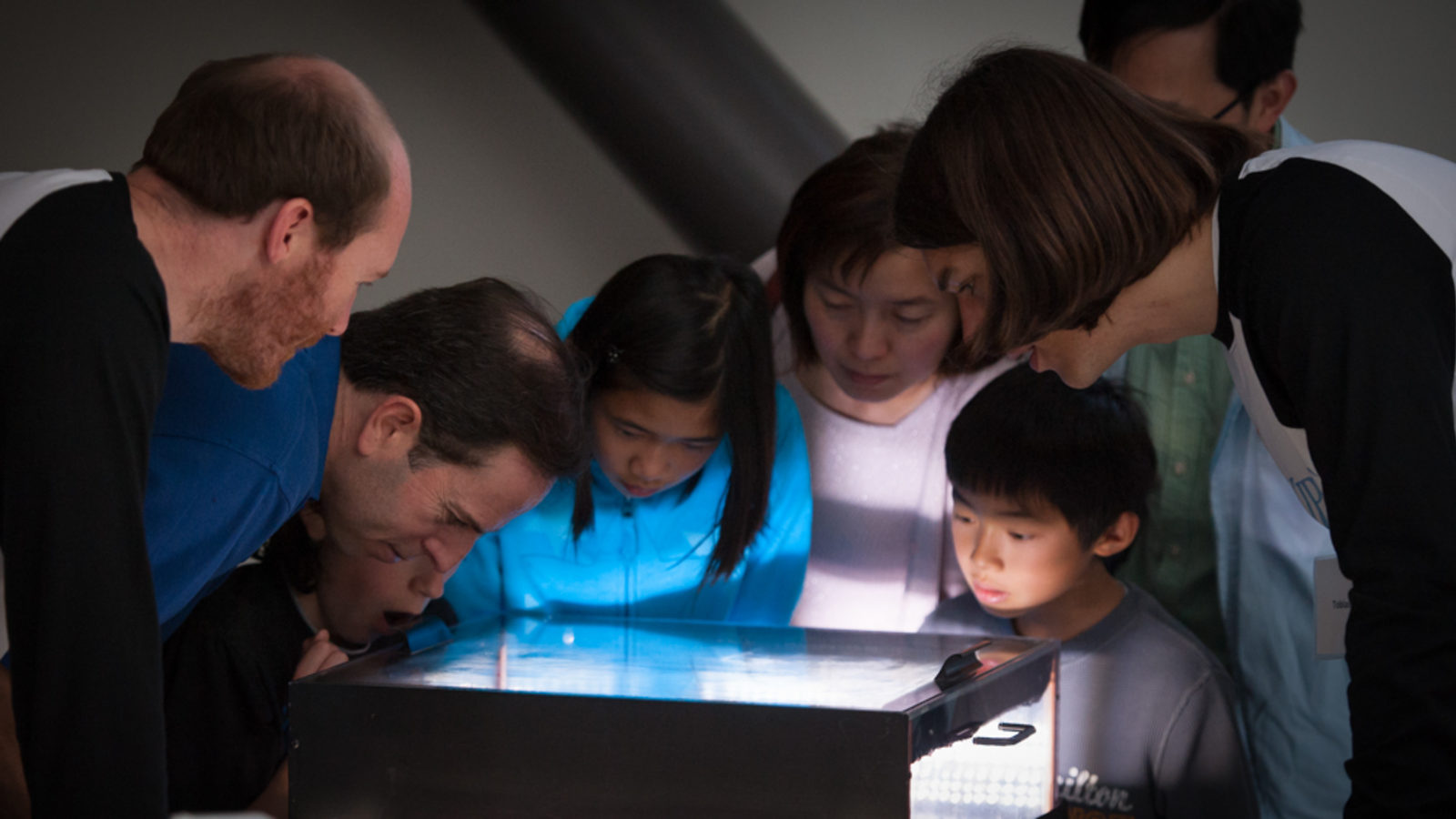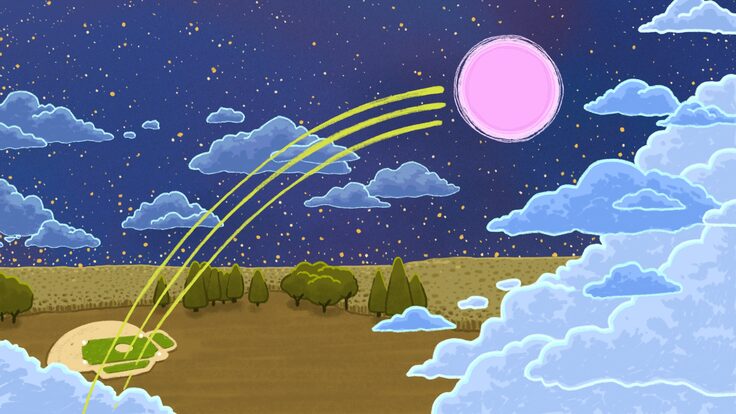Last Sunday, 350 of the closest friends and neighbors of the Kavli Institute for Particle Astrophysics and Cosmology streamed onto the SLAC campus to help celebrate the institute’s 10th birthday.
Instead of gifts, the guests brought something better: curiosity and enthusiasm.
KIPAC's open house, meant to share the discoveries made during a decade of research, included more "eyes-on" and "minds-on" activities than hands-on ones—fitting for an institute that focuses on finding new and better ways to learn about our universe from the scant photons it sends our way.
Several KIPAC scientists were kicked out of their offices for the day and replaced by booths. Favorite stops included a small, simple bubble chamber that drew a perpetual crowd of visitors. Peering into the tank, guests saw the tracks of cosmic rays appear and then fade away like particle ghosts. The Visualization Lab, where KIPAC scientists screened large-scale simulations of the birth of the universe and the behavior of dark matter haloes in three dimensions, revealed the utter beauty of science. And the "make your own pulsar" booth drew kids of all ages: A lump of clay wrapped around two red LED bulbs linked by a watch battery might not sound enticing, but spin it on the end of a string and the resemblance to a pulsar becomes immediately apparent.
KIPAC science took center stage in auditorium-filling talks on topics including the two "darks" (matter and energy), black holes and the institute's current flagship project, the Fermi Gamma-ray Space Telescope.
Researchers were also on hand to explain the cosmic microwave background, gravitational lensing (including a "lens yourself" version of a photo booth), and the taxonomy of galaxies. Guests could take advantage of the sunny spring weather to peer through solar telescopes set up on the lawn. Sadly, it was a "boring day for the Sun," as one of the KIPAC postdocs on duty admitted, with only a few prominences and a lone sun spot visible. They could also learn more about what the telescopes couldn't tell them at the exhibit showcasing the Solar Dynamics Observatory, a project with significant KIPAC involvement.
One booth, "The Physics of Star Trek," seemed particularly popular with the older crowd. Stubborn baby boomers argued for the feasibility of warp drives and transporters and made their preferences for time travel quite clear. But even though KIPAC studies physics, not fiction, they still packed their party with a sense of wonder.
Really, the only thing missing was the cake.







